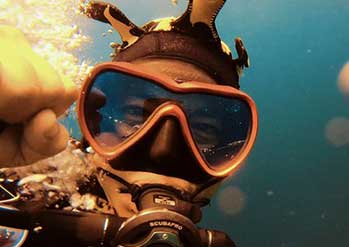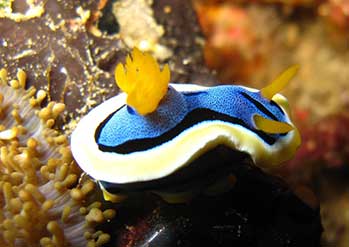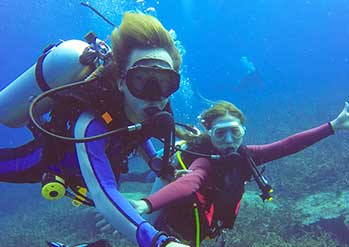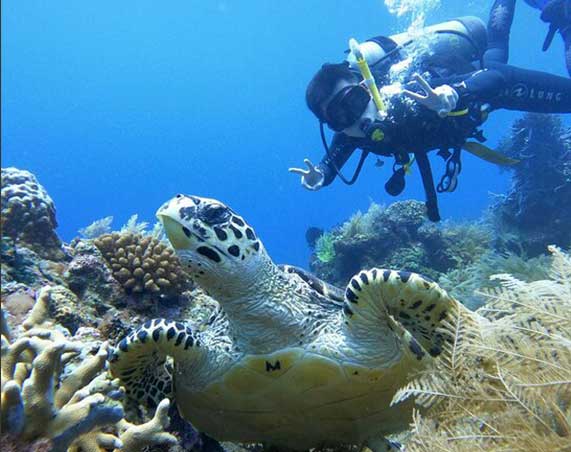Muck and Macro Dive Site
North west Bali
Secret Bay/Gilimanuk
This was Bali’s first and so best-known muck location. 2km wide, 3-12m deep; the only bay off the narrow Bali Strait (where currents can reach 7 knots), it acts as a large catch-tank for many larval and juvenile fish, and rare marine species. The water is cold; the fish fat and healthy! Unusual nudibranchs, Banggai cardinalfish, gobies, Ambon scorpionfish, filefish, puffers, dragonets, pipefish, juvenile Batavia batfish, Mimic octopus, Hippocampus kuda and many other organisms. Elsewhere juveniles hide to avoid predators, but here there are very few large fish, so juveniles have no need to hide. The bottom is fine sand with patches of algae and seagrass, some branches, coconuts (housing for octopodes!), cans, etc. Night-diving yields Bobbit worms, cephalopods, crustaceans, and frequent surprises!
Bayu’s Place
Visibility varies (can be as low as 10m), and the water is warm. Much of the area is rubble and coral, with white sand, although there are some pinnacles. It is usually very easy to see Mandarinfish, along with Pyjama cardinalfish, ghostpipefish, batfish, Demonstinger, many kinds of gobies (inc Signal goby), nudis, Pygmy seahorses, Blue-ring octopus, and many species of shrimp (inc Whip coral shrimp).
Pemuteran Biorock
This site lies right off the beach and is made from individually-shaped metal structures through which low level electricity is run to increase the speed of coral growth. The artificial reefs sit on white sand and provide homes for Signal gobies, eels, small rays, lionfish, frogfish and scorpionfish including Leaf scorpionfish and (occasional) Pegasus seamoths and Finger dragonets. Interesting night diving.

North Bali
The Puri Jati area
Bali’s current hotspot for muck-diving, PJ itself is a wide, gentle, brown sand slope with patchy seagrass, seapens and 20cm tufts of lavender soft coral. Vis is 5-25m, and the water warm. Frequent sightings of Common and Mimic octopus, pairs of Ambon scorpionfish, Flying gurnards, Emperor shrimp, Blue-ringed octopus, frogfishes, unusual Mantis shrimps, Fingered dragonets, wide variety of ghostpipefish, seahorses, seamoths, Demon stingers, Cockatoo flounders, Veiled melibe nudibranchs, juvenile batfish and lionfish, crustaceans, cephalopods and sand dwellers, soft coral cowries, various large shells, pelagic tunicates, the list goes on!
Nearby Kalang Anyar is a gentle, dark sand slope with a variety of seapens and seagrasses. Sightings include Painted frogfish, Mimic octopus and other sought#after cephalopods, Pegasus seamoths, eels. There are noticeable differences in some of the species, quite often the nudis here are totally different from those seen on the same day at PJ.

North east Bali
Tianyar
Located a little north of Tulamben Bay; the undulating black sand topography changes due to the currents and waves that can affect the site. The marinelife can be very interesting: Ghostpipefish, seahorses, Mimic octopus and Wonderpus, eels, frogfish, gobies and many nudis.
Tulamben River Bed
Depending on the season, sightings here may include Ornate and Robust ghostpipefish, Harlequin and Skeleton shrimp (both also found in the Coral Garden), nudis, juvenile frogfish, lionfish, Mimic octopus, Halimeda ghostpipefish, and a multitude of other tiny critters.
Seraya Slope
About 5 minutes south of Tulamben Bay, this black sand slope offers Rhinopias, Harlequin / Coleman / Tiger shrimps, many nudibranchs, Yellow#spotted frogfish, Boxer crabs (although very difficult to find them out in the open with the goatfish around!), ghostpipefish, stonefish, anglerfish, seahorses, and a school of barracudas.
Amed Ghost Bay
The artificial reef and sand slopes can yield Ambon scorpionfish, Ornate and Robust ghostpipefish, Mimic octopus, Wonderpus, frogfish, stonefish – we’re never quite sure what we’ll find here!

East Bali
Jepun
An extension of Blue Lagoon, Jepun yields Leaf scorpionfish, Solar-powered nudibranchs, many varieties of ghostpipefish and frogfish, Pegasus seamoth, Flamboyant cuttlefish, Rhinopias (eschmeyeri and frondosa), shrimps, crabs, Thorny seahorse, shrimpfish and Cockatoo waspfish.














